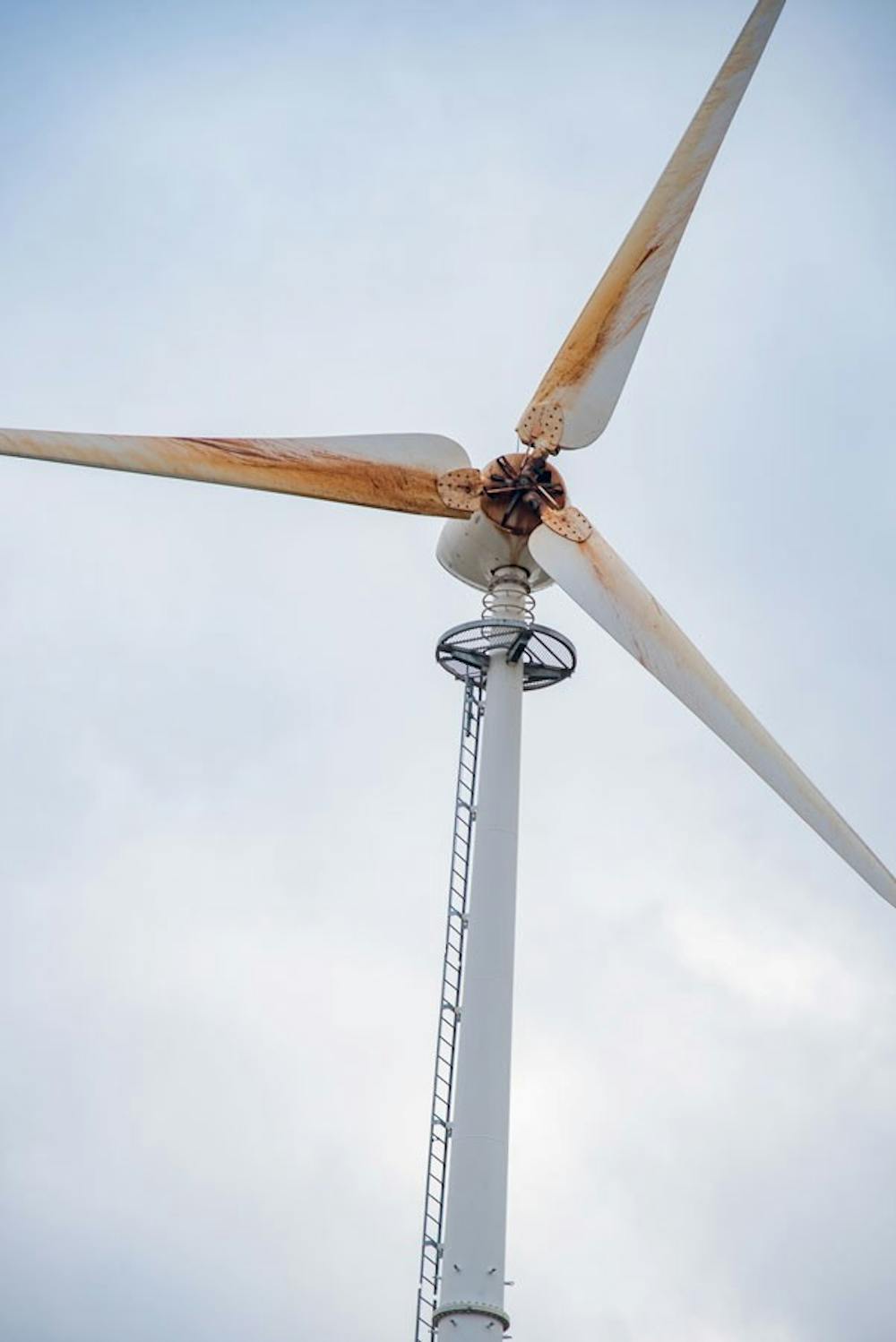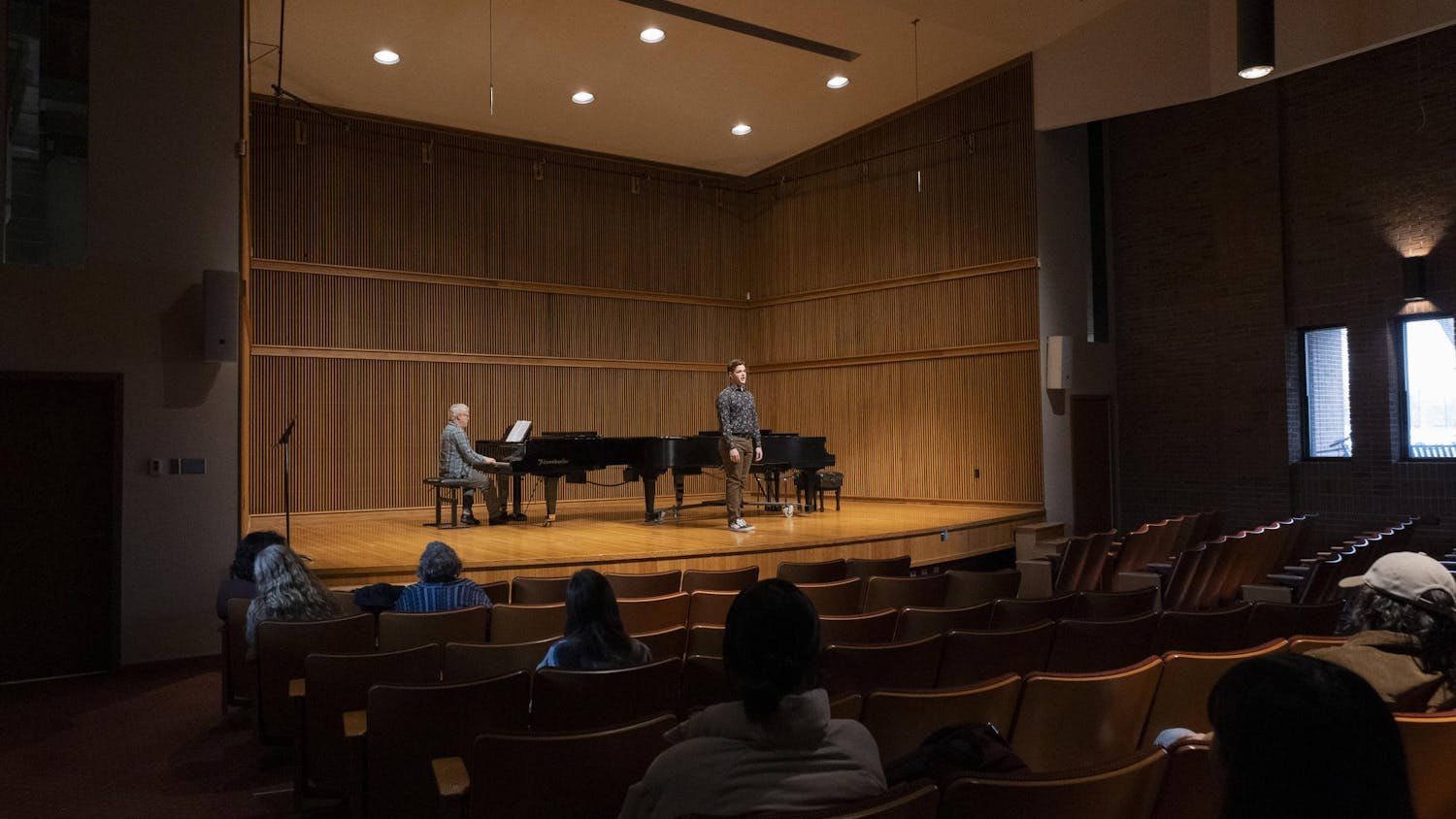By Annabelle Blair | Echo
Taylor's wind turbines-fondly nicknamed "the Olson Twins" because of their location outside Olson Hall-have not operated for nearly six weeks because of safety issues. A routine inspection on February 20 revealed a cracked and worn connector between the hub and blades on one of the turbines.
Taylor has two viable action plans, according to Ron Sutherland, vice president for business administration: fix the turbines or remove them. Both solutions involve significant costs as well as Taylor's utilization of renewable resources. Sutherland said the university will likely make a decision within the next 90-180 days.
Students noticed the turbine nose cap lying on the ground and expressed concerns about how close it was to Olson Hall. Sophomore Brianna Jordahl, an Olson Hall resident, said she was disturbed when she noticed the missing piece.
"It definitely made me think, 'If that piece is falling off, I don't know how many others are falling off,'" Jordahl said.
Greg Eley, facilities services director, was discouraged to hear about the broken connectors. "Disheartening is the first word that comes to mind," Eley said. "But to keep things in perspective, this issue did not involve something that impacted the safety or comfort of students or staff."
Although only one turbine connector is cracked, all six of both turbines' blades and connectors will need to be replaced to ensure safety, Sutherland said. This is because the turbines are the same age, and the connectors share approximate wear and usage.
Built as part of Euler Science Center's Leadership in Energy and Environmental Design (LEED) gold certification in 2011, the turbines cost $700,000 and were intended to provide 18 percent of the building's energy. The energy actually supplied was closer to 12 percent, according to a 2014 Echo article.
According to Sutherland, Euler isn't likely to lose its LEED gold certification if the university decides to remove the turbines. This is because the LEED certification is based on a point system. Euler was awarded three points for its green energy, which is comprised of three different pieces: the turbines, solar panels and geothermal heating and cooling. In order to be in danger of losing the LEED gold certification, Euler would have to lose all three of its green energy points.

The turbines have encountered difficulties almost since they were built. The local company that installed them, ECI Wind and Solar, went out of business shortly after they were built, prompting Taylor to utilize regular servicing with a company located a few hours away. The manufacturing company Endurance later filed for bankruptcy in the fall of 2016.
The turbine model Taylor purchased was renovated the following year, leaving Taylor with the outdated E-3120 50 KW models, and the technical issues associated with these older models. The connector seals were replaced in October 2012 after grease leaked out and stained the blades an orange color. According to Eley, the blades have been partially or completely cleaned at least three times since 2012. The five-year warranty, which expired in 2016, also didn't cover lightning damage incurred by the turbines, according to a 2014 Echo article.
"We were at the front end of some of that technology and what it was doing," Sutherland said. "And now we're left with, 'How much do we want to spend to renovate and get (the turbines) back up to safe operating conditions?'"
Although Taylor doesn't have a formal plan to reduce CO2 emissions, it continues to look at other energy alternatives, according to Sutherland. Solar power is being considered as a more attractive long-term solution. In contrast to the constantly rotating parts on wind turbines, solar energy involves water being pumped through solar panels, which would make it easier to maintain, Sutherland said.
Junior Jacob Graves, an environmental science major, said he hopes Taylor will pursue more green energy options.
"I'm curious to see to what extent will Taylor go to provide a good amount of sustainable energy for the science complex," Graves said. "It would not be fair to me to talk about the right investment moves for Taylor, because I really don't know Taylor's financial capabilities."
Sutherland said the university will continue to look at alternatives for renewable energy as it considers the pros and cons of removing or fixing the turbines.
"The challenge is how to measure the value of the turbines and the presence of the turbines compared to the effectiveness of the turbines," Sutherland said. "We always knew they were going to be marginally effective here . . . what's been more of a surprise is (the difficulties encountered)."





